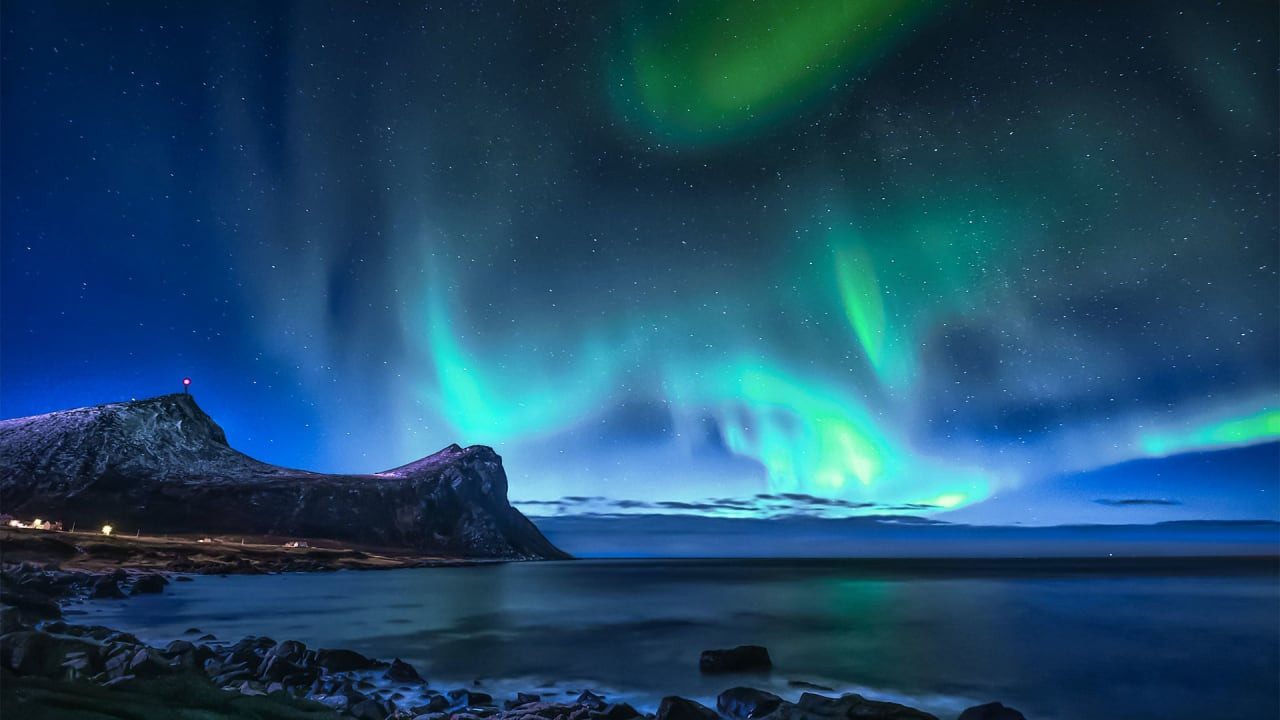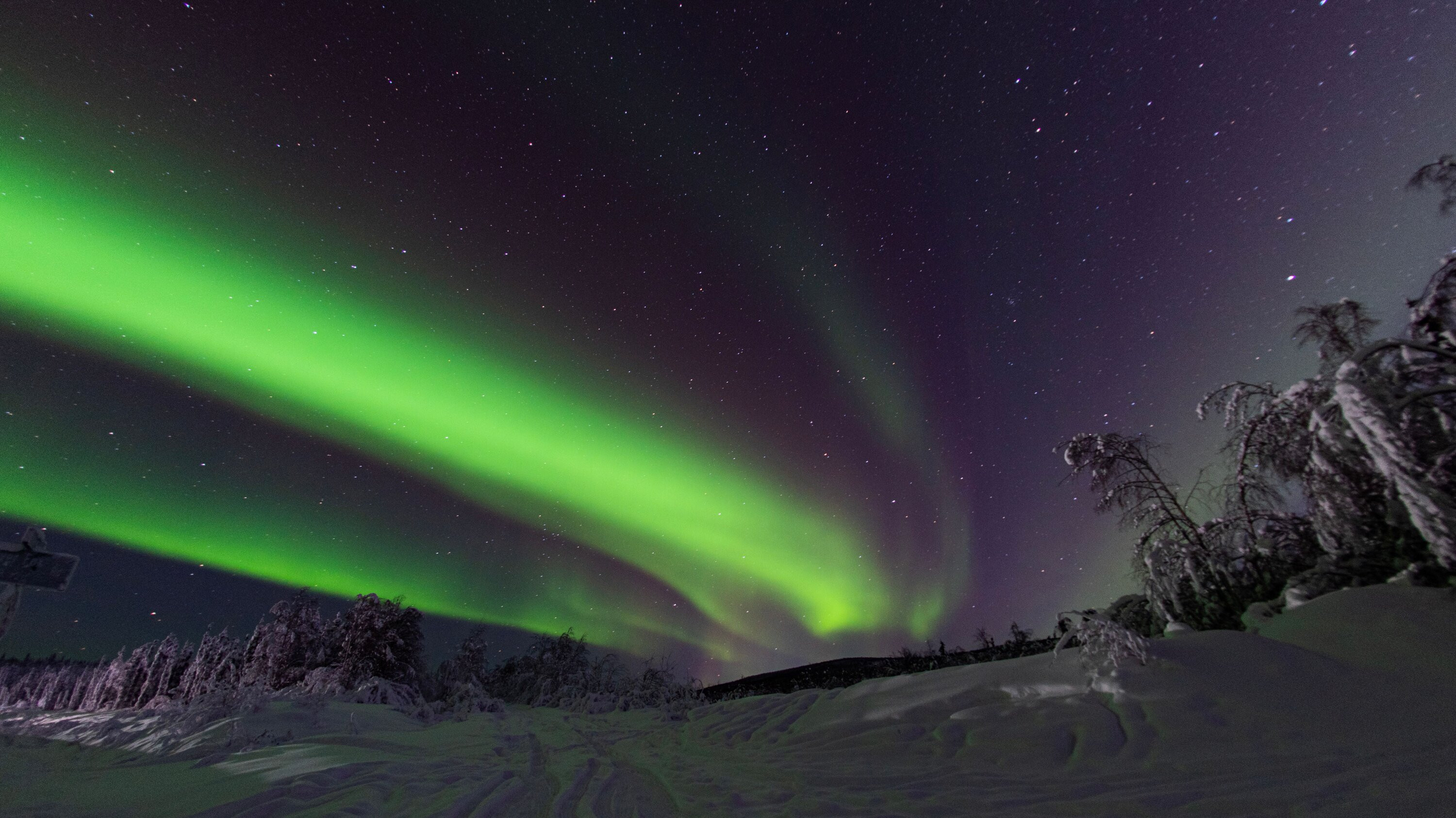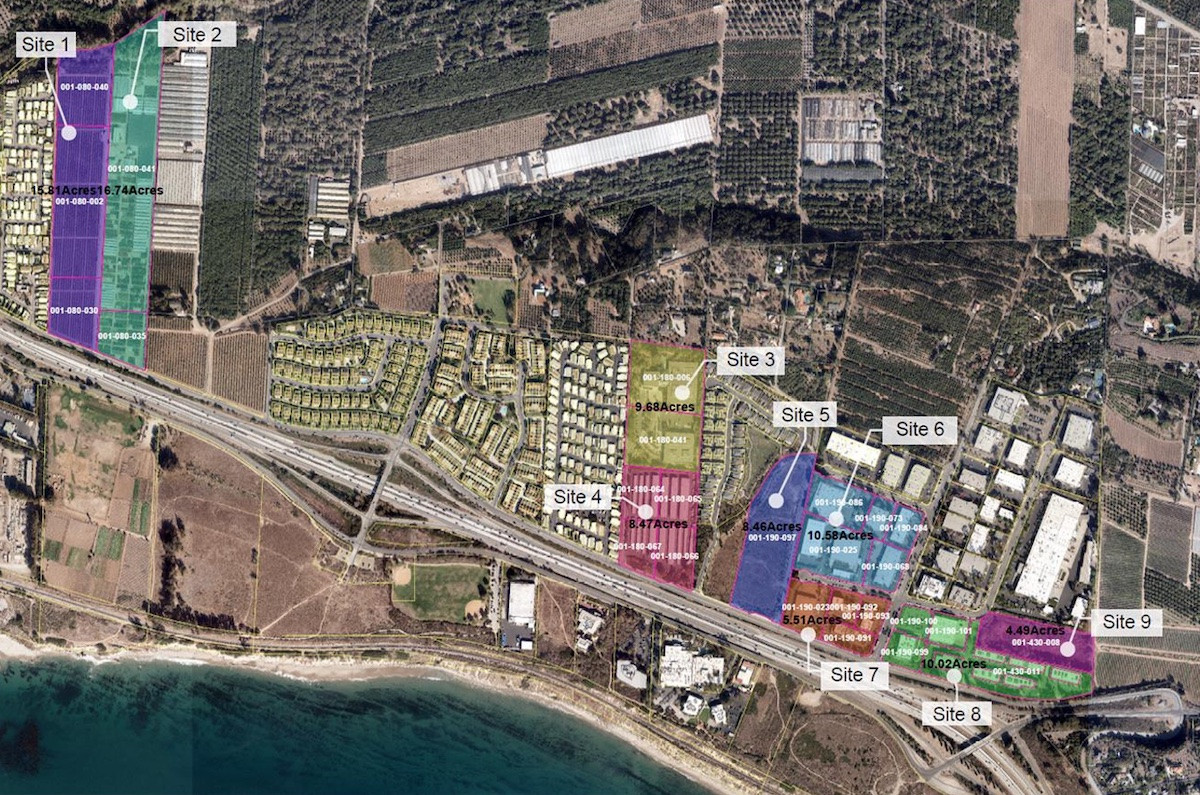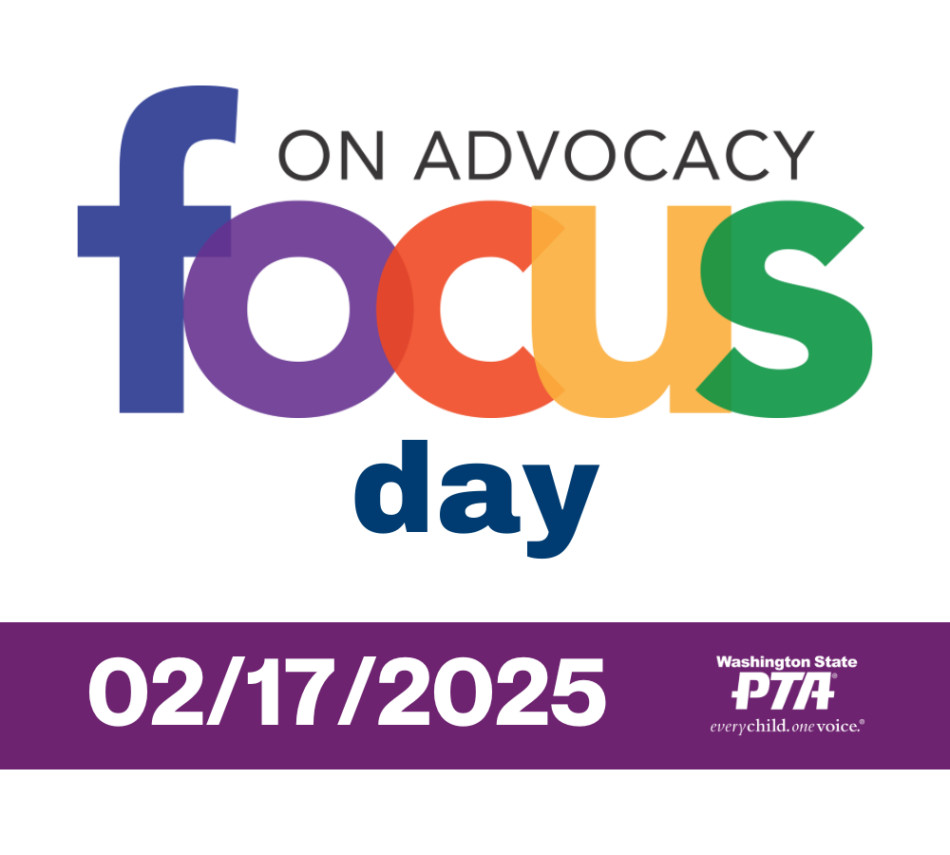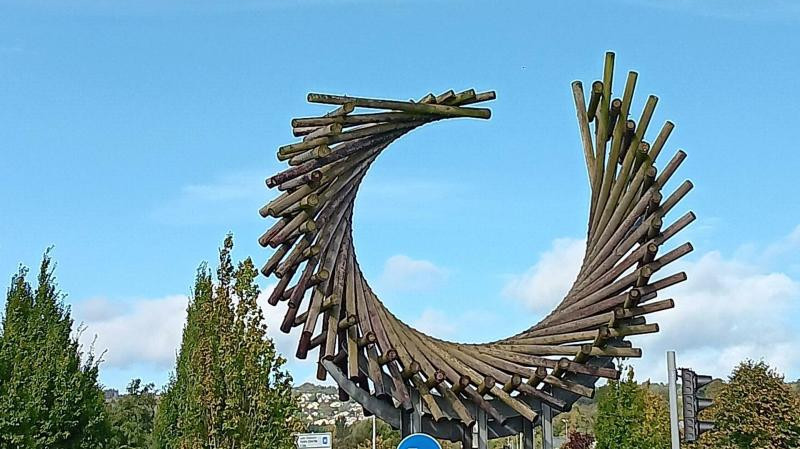A large chunk of northern U.S. states could get a glimpse at the northern lights on Thursday night, according to a National Oceanic and Atmospheric Administration forecast, which predicts a strong showing of the natural phenomenon amid a potentially severe geomagnetic storm. The National Oceanic and Atmospheric Administration forecasts a KP index of eight Thursday night, meaning the aurora borealis is expected to be bright and active. The agency considers the event will “create the best aurora and the extended auroral oval will be observable” by a high number of people. A severe geomagnetic storm watch is also in effect for Thursday, one capable of pushing the aurora viewing line further south in addition to potentially interrupting radios and satellite navigation.
The viewing line is forecast to reach as low as the southern edge of Nebraska, though the farther north people are from the line, the better the chance they have at seeing the northern lights. People in the Pittsburgh area could have a chance to see the Northern Lights tonight. NOAA's Space Weather Prediction Center has issued a geomagnetic storm watch for a G4 storm, that could trigger the Northern Lights around the Pittsburgh area this week. Pennsylvania and the Pittsburgh area fall between 7 and 9 on the K Index, which reflects the magnitude of a geomagnetic storm. The 7 range is listed as 'strong' while the 9 index is listed as 'extreme.' It's not out of the realm of the possibility to be able to see the Northern Lights on Friday, also.
Parts of the northern United States are forecast to have a high likelihood of seeing the aurora, including Alaska and the northernmost portions of Washington, Idaho, Montana, North Dakota, Minnesota, Michigan and Wisconsin. The central and southern parts of those states have a somewhat lower likelihood of seeing the phenomenon, as well as Wyoming, South Dakota and northern Iowa. More than a dozen other states have a chance at seeing the northern lights in some areas: Colorado, Connecticut, Illinois, Indiana, Iowa, Maine, Massachusetts, Missouri, Nebraska, New Hampshire, New Jersey, New York, Ohio, Oregon, Pennsylvania, Rhode Island, Vermont and Washington.
The best aurora can typically be viewed between 10 p.m. and 2 a.m. in areas featuring little to no light pollution and clear skies. The National Oceanic and Atmospheric Administration also encourages aurora viewers to watch from a vantage point such as a hill. Low shutter speeds and night mode will be crucial for those attempting to take photos of the aurora with their smartphones.
Should Thursday night’s forecast prove accurate, viewers in the northern U.S. will get one of the best chances at seeing the northern lights in the last few months, when KP indexes of four or five were usually forecast. Luckily, for those who miss out on the aurora this time around, solar activity is expected to increase as the peak of Solar Cycle 25 should arrive between late 2024 and early 2026. The cycle can create a jump in sunspots and geomagnetic storms that could contribute to stronger aurora forecasts.
How To See The Northern Lights
There are a few things you can do to try and see the Northern Lights. Once it gets dark, find a spot away from lights, let your eyes adjust and look north. They show up best in pictures. Use 'night mode' on your phone! Colorful auroras from the Northern Lights were visible throughout the Pittsburgh area earlier this week for at least the third time this year. Both the aurora borealis and the Perseid meteor shower were visible one night in August, making for a dazzling celestial show. Green, purple, red and pink hues were also visible in Western Pennsylvania skies back in May.
What Causes The Northern Lights
When a geomagnetic storm occurs, solar wind is sent toward Earth. Charged protons and electrons follow Earth's magnetic field and enter the Earth where the magnetic fields are the weakest: the poles. The electrons smash into all the different molecules that make up our atmosphere, creating a dazzling display of colors in the sky.
What To Expect From The Geomagnetic Storm
The Space Weather Prediction Center, a division of NOAA has issued a G4 Severe Geomagnetic Storm Forecast. This is the second highest level and can produce The Northern Lights/Auroras in locations through The Mid Atlantic and even to The Gulf Coast, Texas, and California. While we may be hoping for a beautiful display of colors at night, this warning is for the potential disruption to Power Grids and Satellite communication. See more below.
During storms, the heat they create increases “density and distribution of density in the upper atmosphere, causing extra drag on satellites in low-earth orbit,” the Space Weather Prediction Center said. The local heat the storms create can also “modify the path of radio signals and create errors in the positioning information provided by GPS,” according to the center.
“Satellite navigation (GPS) degraded or inoperable for hours, Radio – HF (high frequency) radio propagation sporadic or blacked out.” The power grid may also be affected by “possible widespread voltage control problems,” according to the SWPC.
More About The Geomagnetic Storm
This occurs 60 days per each 11 Year Cycle Planetary Kp Index can reach 8 or 9-. This would support the southern viewing opportunity. Power systems: Possible widespread voltage control problems and some protective systems will mistakenly trip out key assets from the grid. Spacecraft operations: May experience surface charging and tracking problems, corrections may be needed for orientation problems. Other systems: Induced pipeline currents affect preventive measures, HF radio propagation sporadic, satellite navigation degraded for hours, low-frequency radio navigation disrupted, and aurora has been seen as low as Alabama and northern California (typically 45° geomagnetic lat.).
A Reminder To Look North
I know this may sound silly, but the Northern Lights are best seen Looking NORTH. You may also want to get away from city lights and any obstructions like buildings or trees. Getting higher in altitude will also improve your chances in lower latitudes.
Get Outside And Enjoy The Show
The aurora could be a beautiful sight for Pittsburghers and residents of other parts of the northern United States, but a storm watch is in effect for the potential disruption of power grids and satellite communication. While we are hoping for a beautiful display of colors at night, keep in mind that the aurora could be a disruption to our everyday lives.




